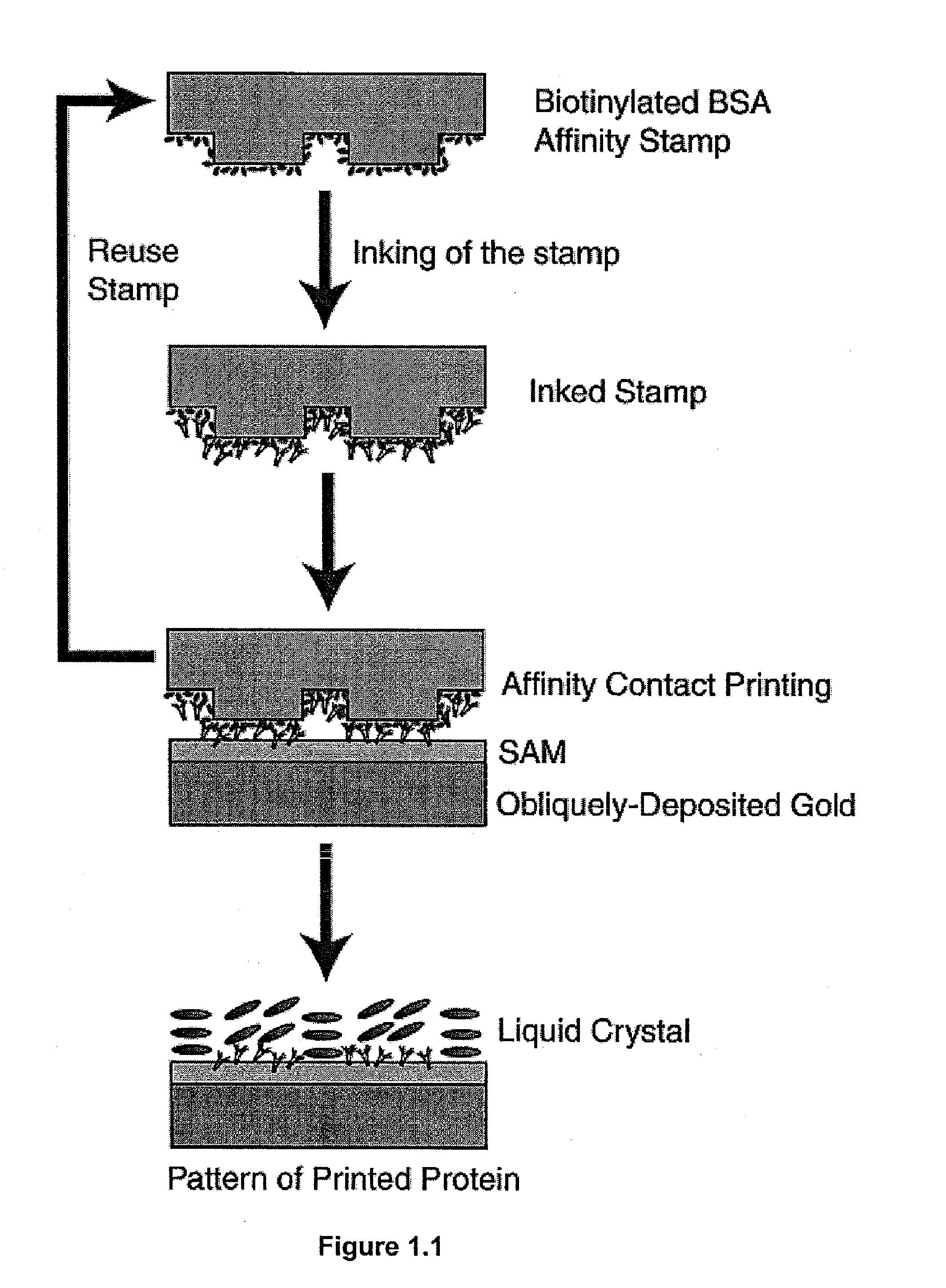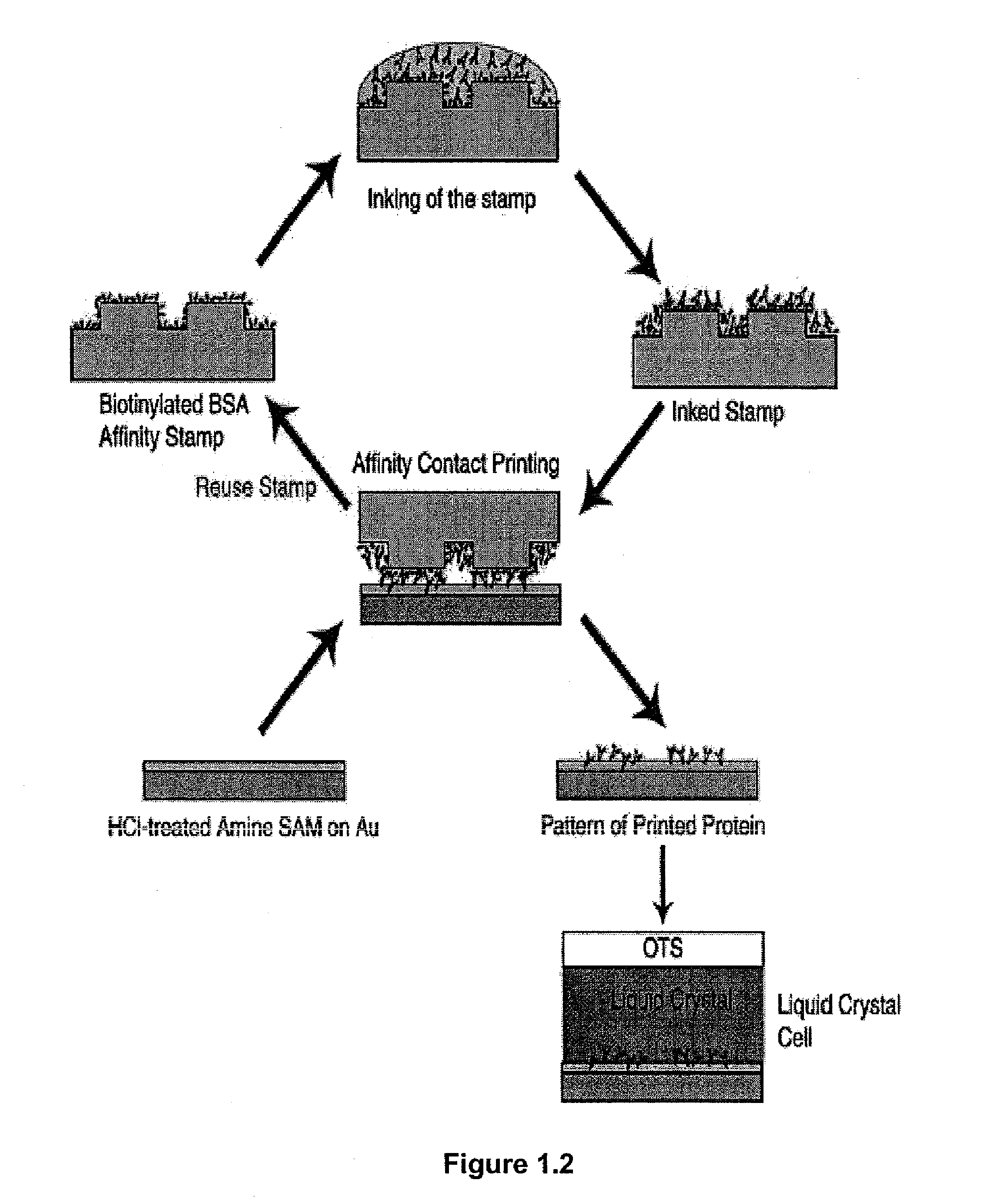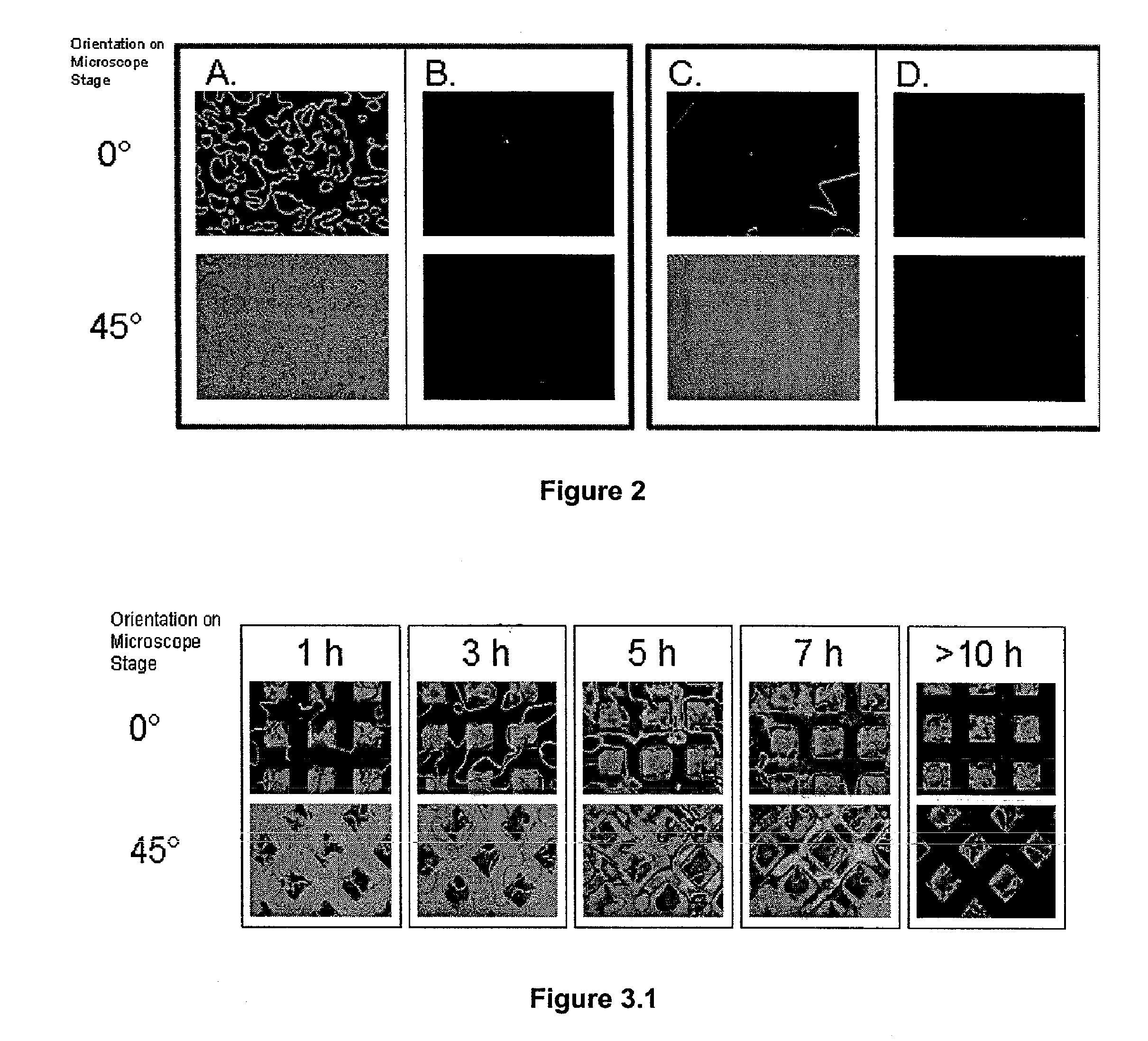Using liquid crystals to detect affinity microcontact printed biomolecules
a technology of affinity microcontact and liquid crystals, applied in the field of analytical chemistry and biochemistry, can solve the problems of radioactive labels that require special handling, expensive labeling, and radioactive materials that are also hazardous
- Summary
- Abstract
- Description
- Claims
- Application Information
AI Technical Summary
Benefits of technology
Problems solved by technology
Method used
Image
Examples
example 1
Design of Surfaces for Affinity Microcontact Printing. The present example used a detection surface having a SAM that possessed the following characteristics: (I) hydrophilic, (II) uniformly aligns liquid crystals, (III) protein will not desorb from the SAM when contacted with liquid crystal or an aqueous buffer. Amine-terminated SAMs are hydrophilic. Harnett, et al. Appl Phys Lett 2000, 76, 2466-2468, Dulcey, et al. Science 1991, 252, 551-554. Prior work has also shown that surfaces coated with primary amines non-specifically adsorb biological materials from solution. Accordingly, amine terminated SAMs were used in the present example. The final characteristic sought for the detection surface was uniform alignment of liquid crystal. To determine if the amine-terminated SAM would uniformly align the liquid crystal 5CB, a sandwich cell with the liquid crystal 5CB sandwiched between two substrates (liquid crystal thickness: ˜12 μm) was created. The bottom substrate was an amine-termi...
example 2
Using Ellipsometry to Confirm Affinity Microcontact Printing of Proteins. The transfer of protein from the affinity stamp to the amine-terminated SAM pretreated with 0.1 N HCl was confirmed by ellipsometry. For ellipsometry, flat PDMS were used stamps. The stamp was first oxidized with an O2 plasma and then functionalized with a primary amine using silane chemistry (aminopropyltriethoxysilane). Biotinylated BSA was then covalently attached to the stamp through Bis[sulfosuccinimidyl] suberate (BS3). The stamp was inked by placing a drop of anti-biotin IgG (1 mg / ml in PBS) on the stamp surface for 5 hours then rinsed with water for 15 seconds. The stamp was then contacted with the amine-terminated SAM for 30 seconds. A change in ellipsometric thickness of 10.8±0.4 nm was measured for stamping the inked anti-biotin IgG from the affinity stamp. Prior work has reported a similar change in ellipsometric thinkness (10 nm) for the binding of anti-biotin IgG to immobilized biotinylated BSA....
example 3
Orientations of Liquid Crystals on Affinity Microcontact Printed Proteins. The orientations of liquid crystals were next investigated on proteins that were deposited onto amine-terminated SAMs by affinity microcontact printing. The PDMS stamp used for the liquid crystal experiments possessed an array of 300×300 μm square pegs. Using the same procedure described above, the stamp was oxidized and then functionalized with a primary amine. Biotinylated BSA was covalently attached to the stamp. The stamp was then inked by placing a drop of anti-biotin IgG (1 mg / ml in PBS) on the stamp surface for 5 hours then rinsed with water for 15 seconds. The stamp was then contacted with the amine-terminated SAM for 30 seconds. The liquid crystal 5CB was then sandwiched between two surfaces for detection of the protein. The bottom surface of the liquid crystal cell was the amine-terminated SAM pretreated with 0.1N HCl that had been affinity microcontact printed with antibody. The top surface was OT...
PUM
| Property | Measurement | Unit |
|---|---|---|
| Affinity | aaaaa | aaaaa |
Abstract
Description
Claims
Application Information
 Login to View More
Login to View More - R&D
- Intellectual Property
- Life Sciences
- Materials
- Tech Scout
- Unparalleled Data Quality
- Higher Quality Content
- 60% Fewer Hallucinations
Browse by: Latest US Patents, China's latest patents, Technical Efficacy Thesaurus, Application Domain, Technology Topic, Popular Technical Reports.
© 2025 PatSnap. All rights reserved.Legal|Privacy policy|Modern Slavery Act Transparency Statement|Sitemap|About US| Contact US: help@patsnap.com



